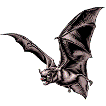Museum, University of Nebraska State

University of Nebraska State Museum: Mammalogy Papers
Document Type
Article
Date of this Version
6-1-2008
Citation
Journal of Zoology (June 2008) 275(2): 106–114.
doi: 10.1111/j.1469-7998.2008.00411.x
Abstract
We investigate the nonlinear properties of dentine from the upper canines of coyotes Canis latranswith bending tests. With the results we predict the behavior of whole canines under load. Coyote dentine is not homogeneous but is stronger and more ductile farther away from the pulp cavity. The modulus of rupture (MOR) first increases and then declines with distance from the pulp cavity. Our analysis of the composite nature of dentine produced by these gradients indicates that there may be an adaptive explanation with the composite having nearly the strength of the strongest dentine and a work of fracture greater than even the most ductile dentine. Coyote dentine is considerably stronger than human dentine. In coyotes, the peak MOR, a measure of bending strength, is 480 MPa, compared with a maximum of 225 MPa for human dentine. This value is about the same as the weakest coyote dentine that we found near the pulp cavity. Finally, enamel plays, at most, a small role in the bending strength of the whole tooth. Our results indicate that enamel under tension adds little to strength, but we cannot dismiss a small role for enamel in compression.


Comments
Copyright © 2008, Blackwell. Used by permission.